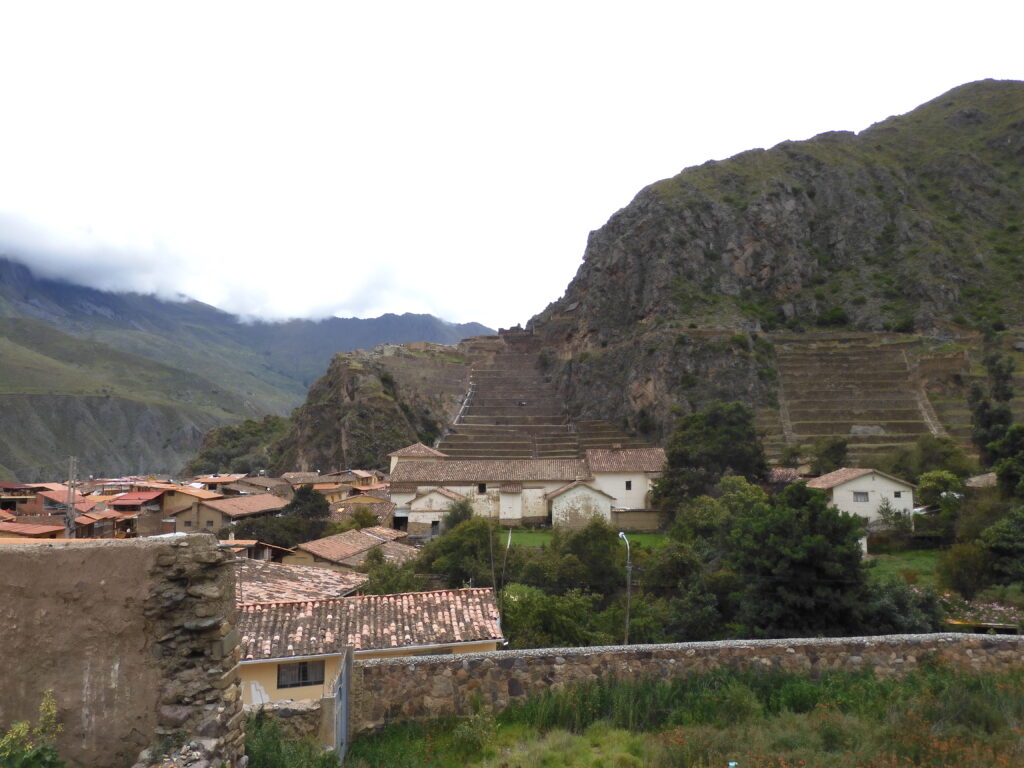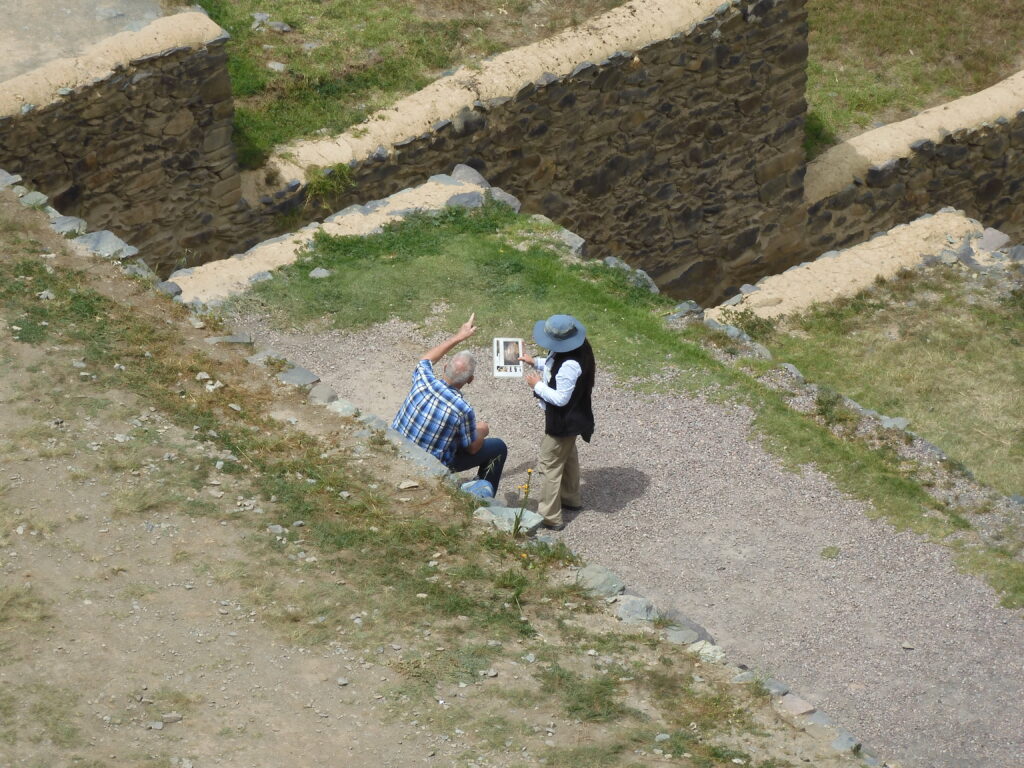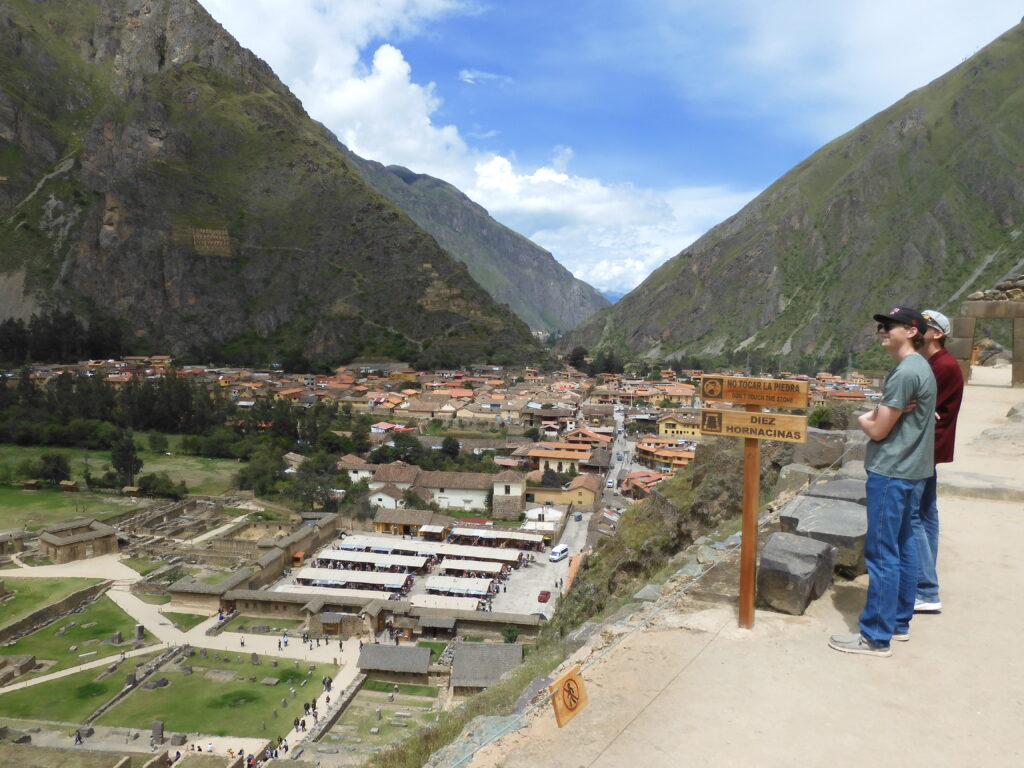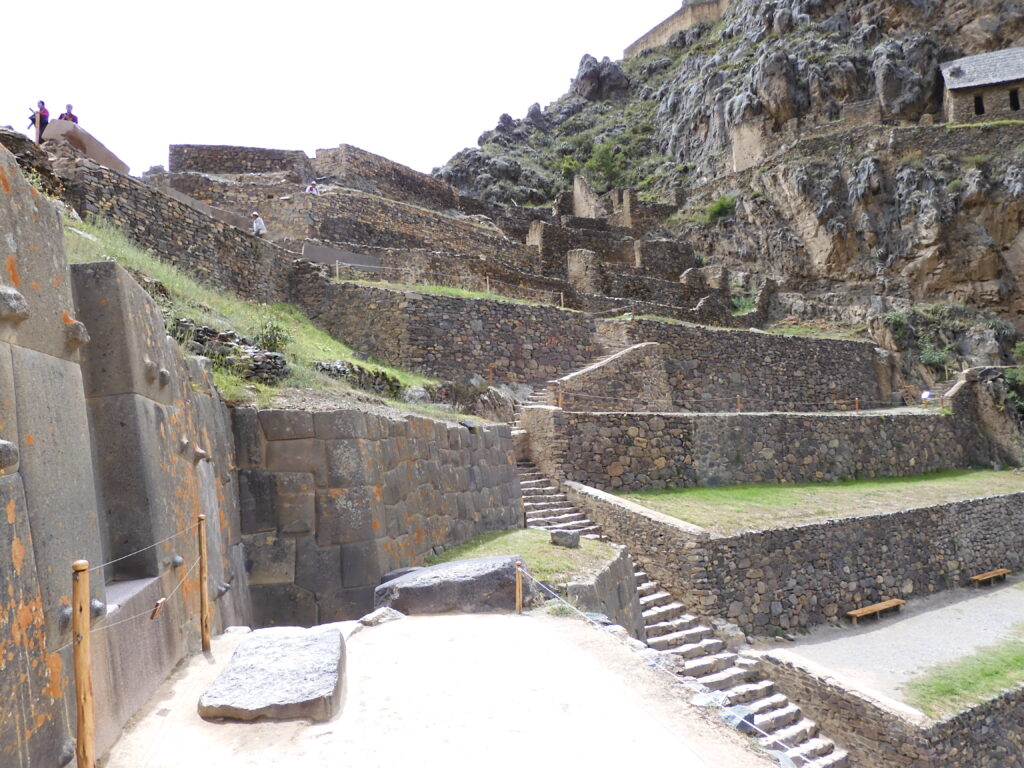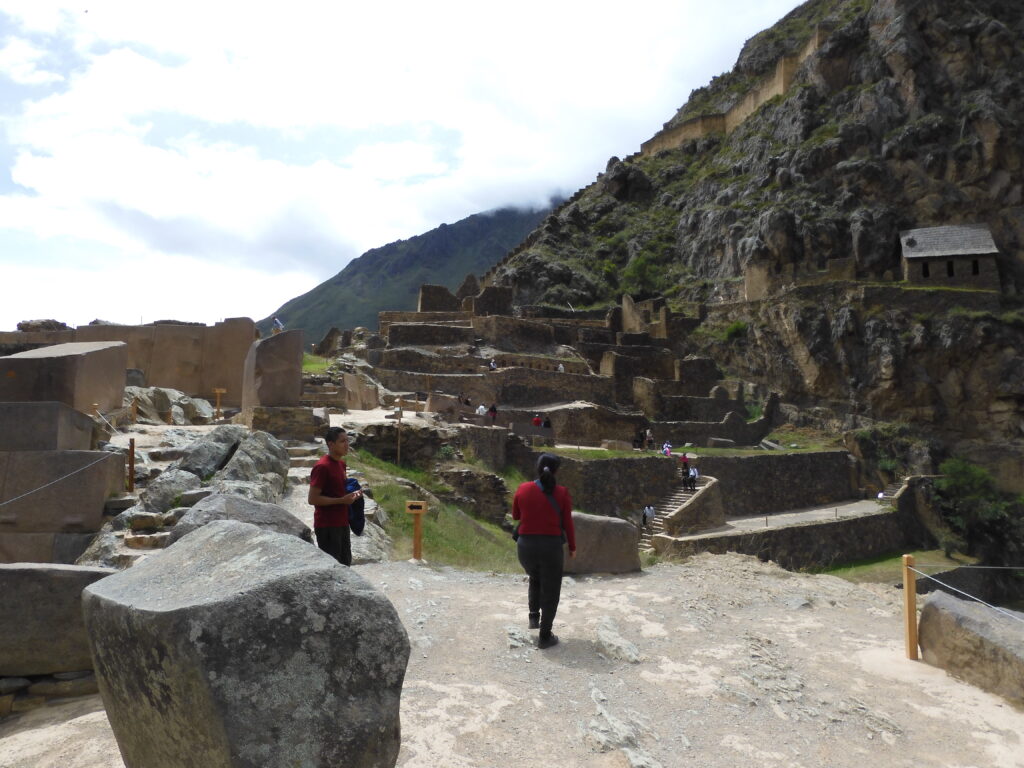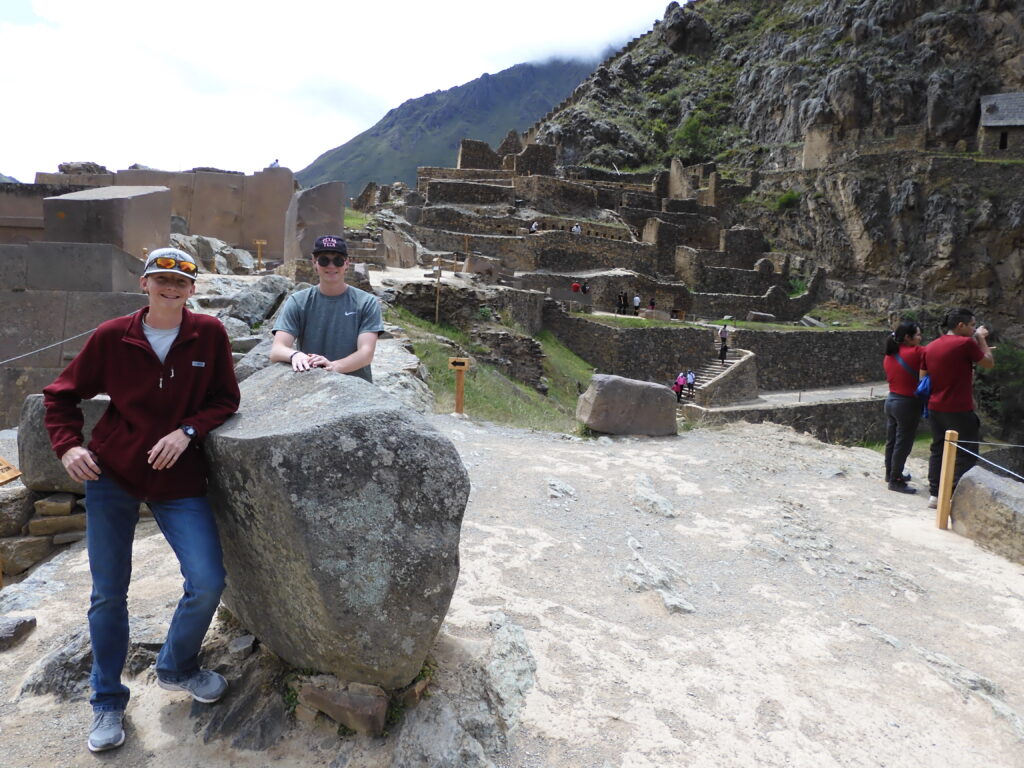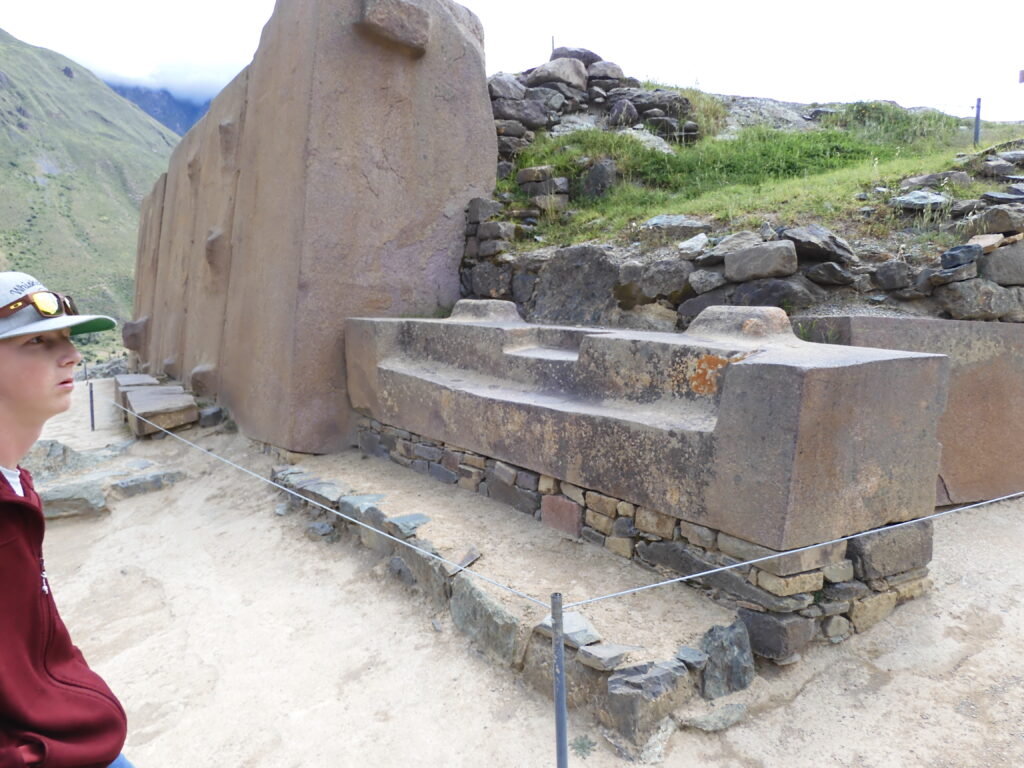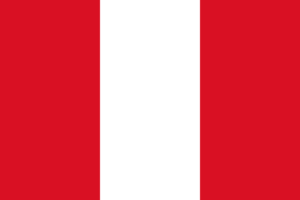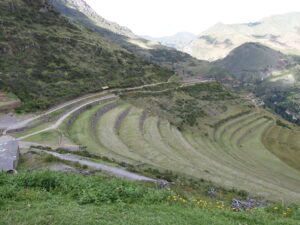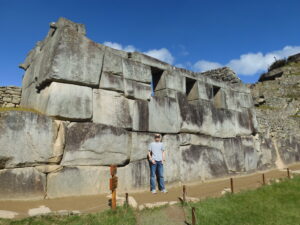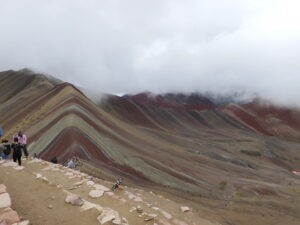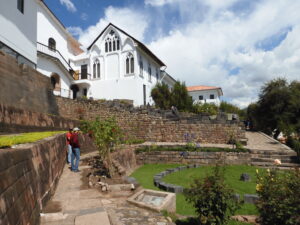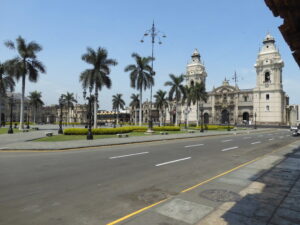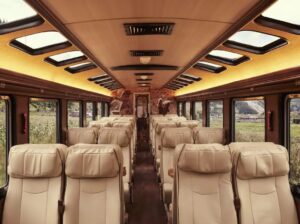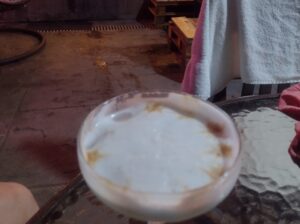Sacred Valley
Toward the Train
The vast majority of people who visit this part of Peru seem to do everything as part of organized tours. This may be due to the easy solution this provides to your logistical problems and unknowns of navigating a developing, unfamiliar country. Because it relies so heavily on tourism, nearly everyone you meet in Cusco will offer you some kind of tour guide services. Many of the people offering to give guided tours of Inca sites could not accurately identify the century in which the Spanish vanquished the Incas. Folks explaining the astronomical significance of Inca temples often were unaware that the sun does not behave in the traditional ways at solstice when you are between the Tropics of Cancer and Capricorn. We even asked one would be guide when the church was built that he wanted to guide us through. His answer: 1450 – 42 years before Columbus sailed for the New World! So when it comes to hiring guides to interpret sites for you, I would say caveat emptor. If you feel you would benefit from explanations beyond what some basic research on a site the night before your visit might yield, I would recommend you have a polite conversation with your prospective expert in which a couple of questions “happen” to come up for which you already know the answer. For instance, if you can find a way to coax your guide into telling you when Pizarro conquered the Incas, s/he ought to tell you something close to 1532. If they are wildly off, perhaps you should seek a different guide. My general experience has been the pushier the sales pitch, more dubious the guide.
The good news from this plethora of personages offering guide services is that all of what they offer is negotiable. If you are comfortable with the quality of the information being provided, you can let your guide interpret sites for you. If you need help arranging locations to maximize what you can do on a given day, a local driver is quite likely to know how to get you to what places, and what you can reasonably expect to visit in a day. If you just need a ride from one place to the next who will wait for you while you visit your sites, that can also be negotiated. Just be sure all of the negotiations are done before you depart, and that everyone is clear on what is going to be done and what the costs will be.
We had a special request for the driver who took us to Pisaq. We asked him if he would be willing to give us a one way ride the next morning to the Ollantaytambo train station via Maras and Moray (which are on the way), and the Ollantaytambo ruins (right near the train station). The driver sent his brother the next morning, but he had given enough tours to suggest we also visit Chinchero and a textile facility en route. This ended up giving us a very full day, placing us on the train well after 3:00 p.m., but it allowed us to incorporate several site visits into what would otherwise have been a bus ride to the train station. It worked out well for us, and was probably a little easier for our guide than interpreting sites that were a bit beyond his area of expertise.
Chinchero is on the tourist ticket. It was a site right along the old Inca travel routes. During one of the Inca rebellions, the indigenous peoples burned up some food stores there to prevent them falling into Spanish hands. There is also a very old church with a bit of colonial art in it. We ended up getting better interpretation of the site from a local museum that cost an extra few soles, but added only a few minutes to our visit. The textile plant offered some nice insights into the process of fabricating and dying traditional blankets and ponchos. In all honestly, it was a tourist trap and a sales pitch, but a fun and interesting one that didn’t take too long.
The Maras Salt Flats are a common stop that is not included on the tourist ticket. There are some nice explanations of how the salt came to be extracted here, and how the process works. All of the signage is in Spanish, though. So if your Spanish is not all that great, a knowledgeable guide might be of some assistance. The water that flows from the mountain near Maras is saline. It runs out into little lagoons, each of which is owned by a family from the local village. The water is allowed to sit in the lagoons until the water dries so that the salt can be collected. Water can be diverted into the different lagoons as needed, and the salt from different levels of each harvest differs in quality. They will, of course, sell you some salt at the end of your visit. (Continued)
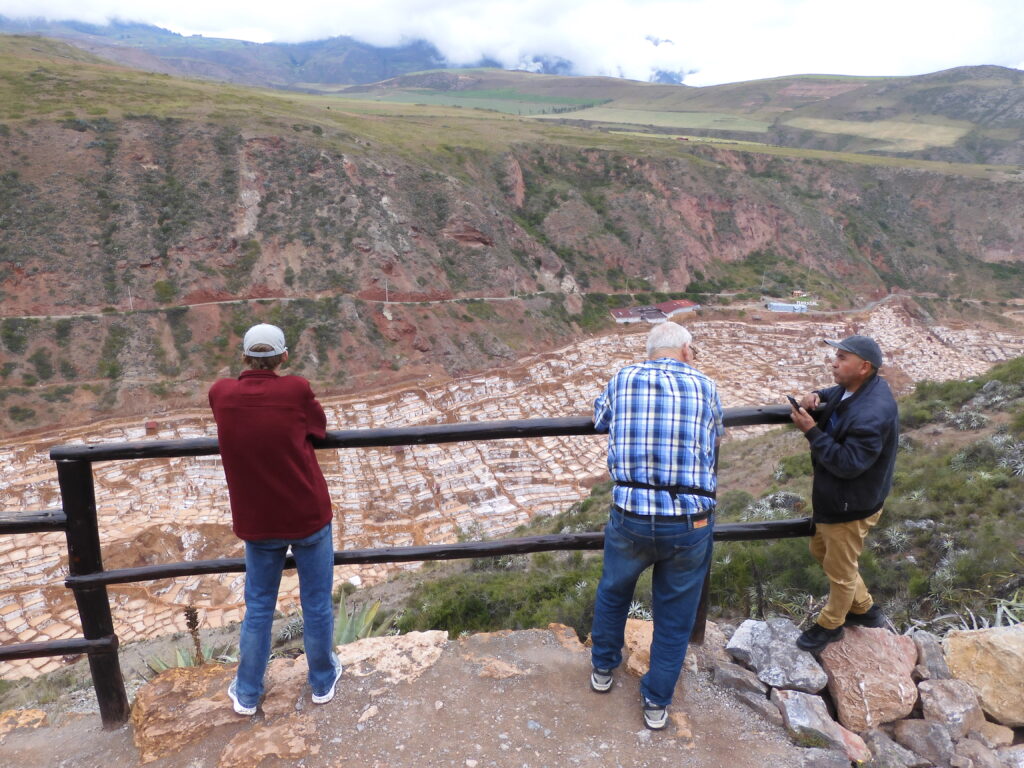

Moray is also an extremely popular stop on the Inca archaeological circuit. It appears to have been a kind of agricultural experiment station. At one point, interpreters believed this had been an amphitheater. The modern consensus is that each of the levels of this structure served as a microclimate where the optimum arrangement could be ascertained in growing one of the hundreds of different varieties of potatoes produced in Peru, or raising different types of cereals, etc. There are two adjacent sets of lesser preserved concentric circles at Moray, and you can hike around them all without gaining or losing a lot of elevation. This site will occupy a little more time than Maras, but it still did not take us much over an hour – and I tend to savor sites longer than most visitors. (Continued)
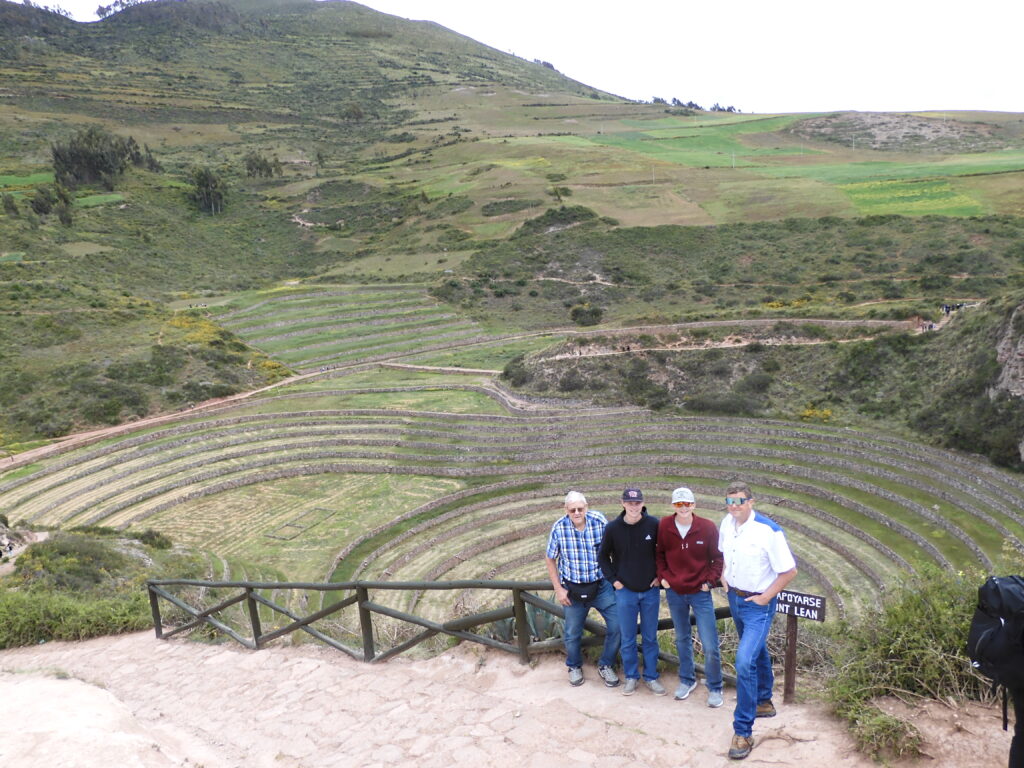
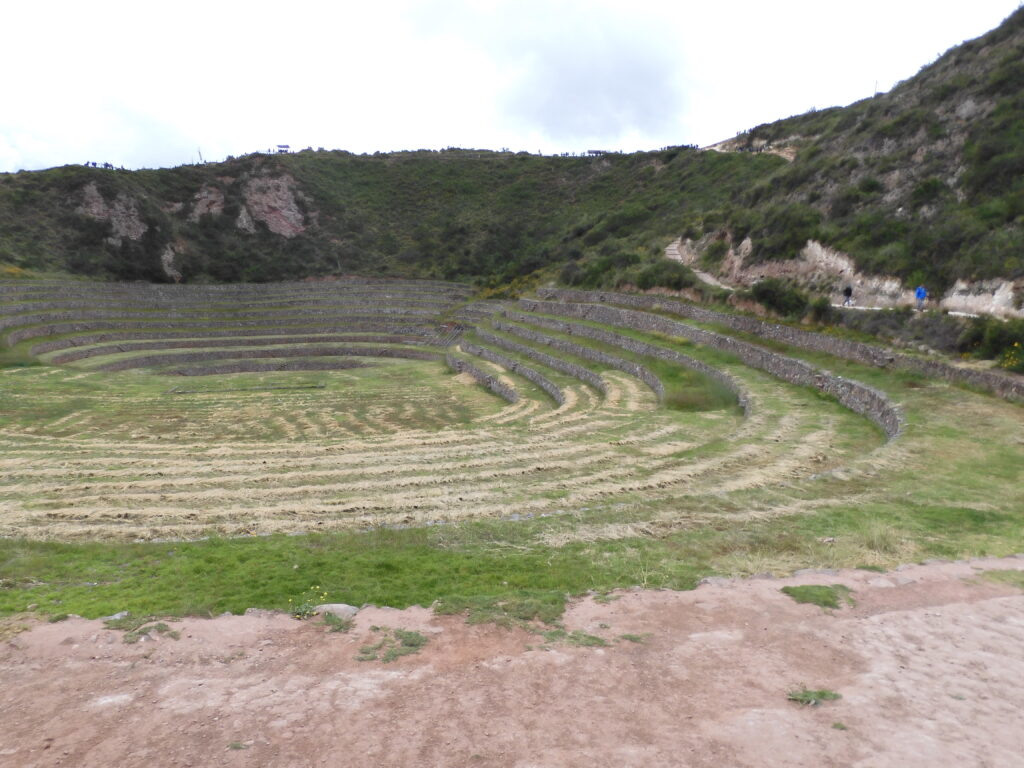
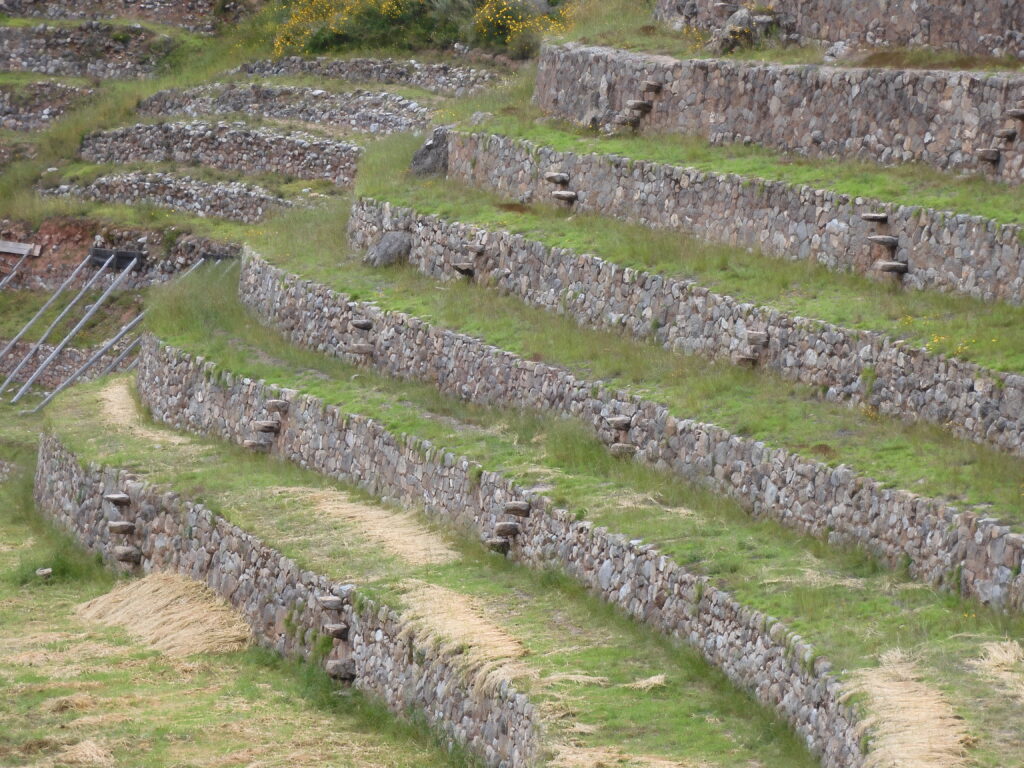
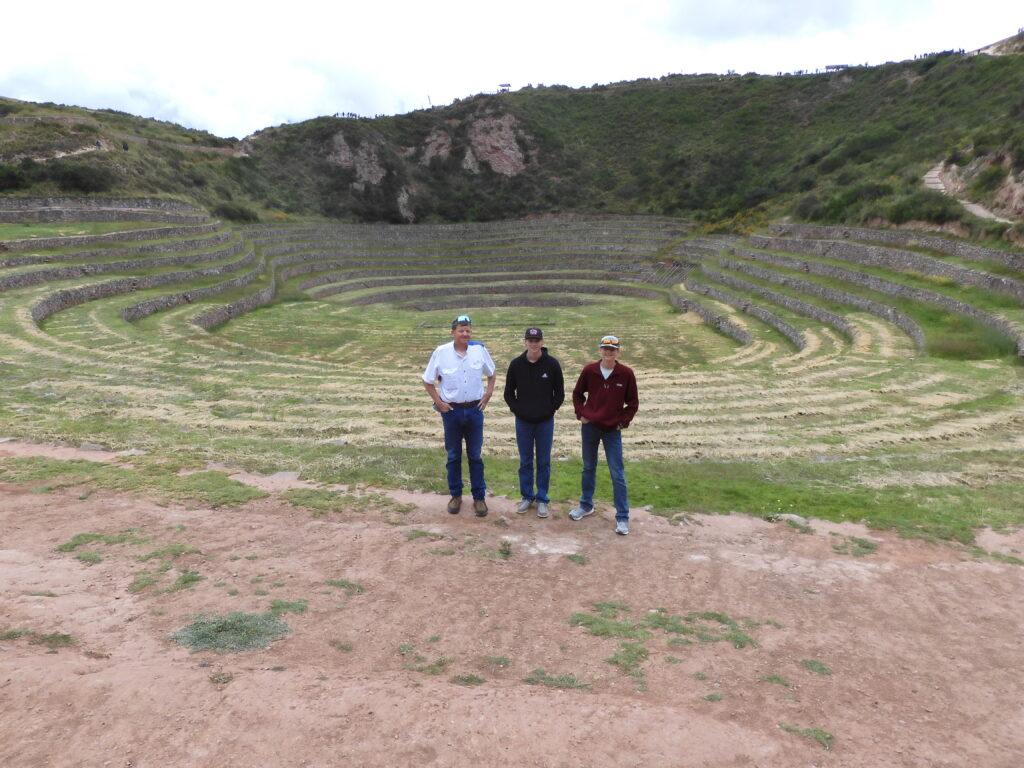
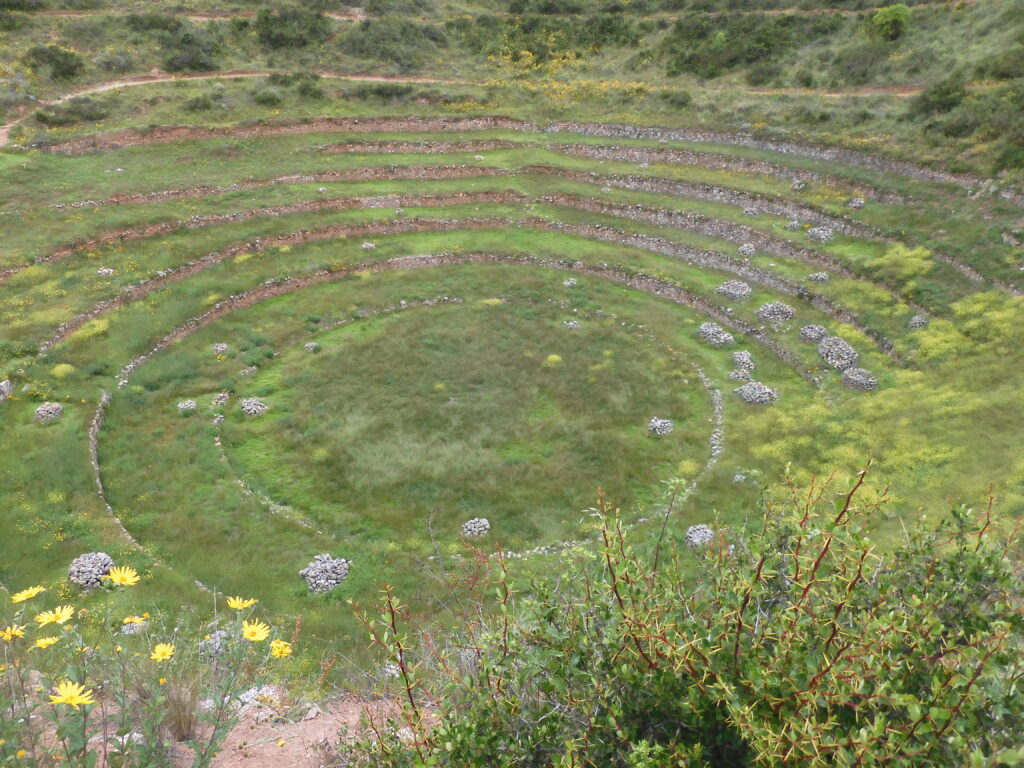
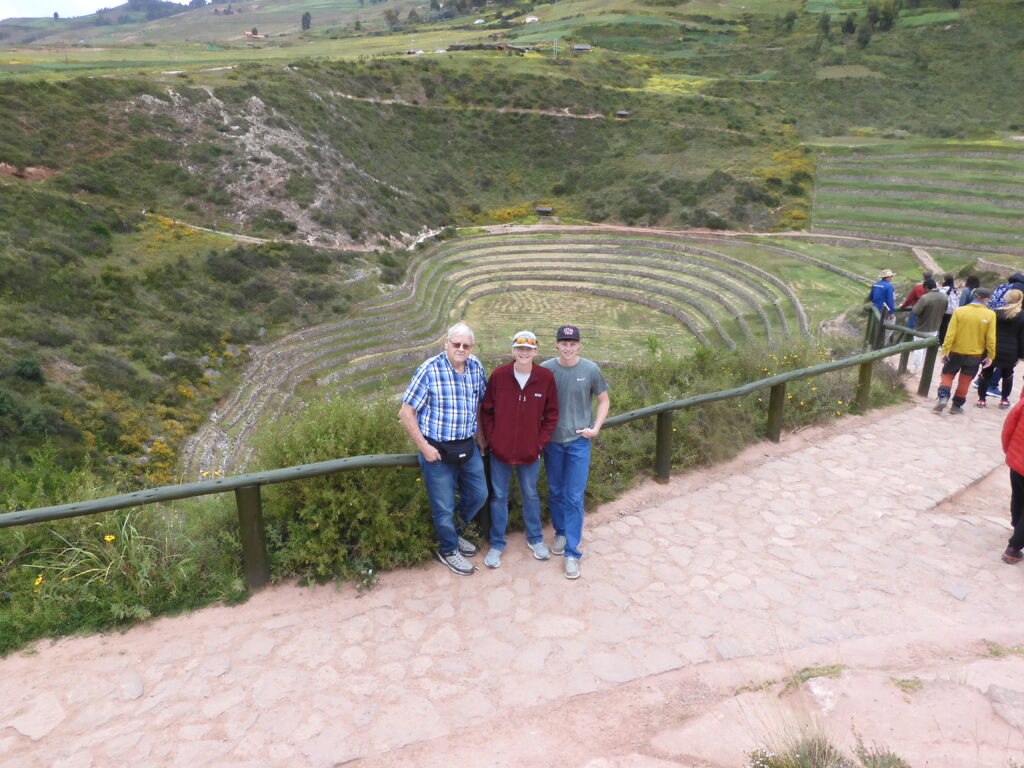
Ollantaytambo is a magnificent, towering set of ruins in its own right. They occupy a rising wall near the village of Ollantaytambo. You begin your visit at the bottom of the site and although all of the climbing is done on the ruin itself, a significant amount of ascent will have to be made to see the whole site. There is a sun temple with an amazing view toward the top. It features very finely crafted rectangular stones hewn with far greater care and accuracy than most other buildings. From this site, you can also see storage facilities across the canyon, and an ominous looking cave near them. We could have spent a bit more time here than we did. I would recommend allowing three to four hours here just to look at the park, which like Moray is included in your Boleto Touristico. There are also plenty of shops in town where food and supplies can be purchased. The prices do seem slightly elevated here, due to this being the jumping off point for the trains to Machu Picchu.


